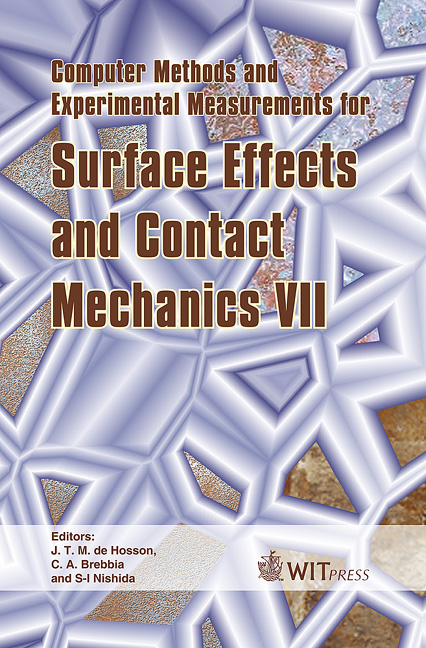Experimental And Numerical Investigation Of The Sliding Behaviour Of A Set Of Two Rigid Blocks Subjected To Cyclic Shear-type Loads
Price
Free (open access)
Transaction
Volume
49
Pages
11
Published
2005
Size
588 kb
Paper DOI
10.2495/SECM050331
Copyright
WIT Press
Author(s)
G. C. Manos, V. Kourtides & V. J. Soulis
Abstract
The aim of this paper is to study the shear transfer mechanism along horizontal rigid block interfaces. The shear resistance offered by this interface is the main mechanism mobilized by the structural elements of many historical stone masonry structures in order to transfer horizontal actions from earthquakes and wind forces to the foundations. Cyclic shear experiments were performed in the laboratory in order to study this shear behaviour in the interface between two rigid blocks. Three groups of rigid block specimens are utilized with tests performed by different researchers. The first group includes two steel blocks with a horizontal interface made smooth by special machining. The second group is made of white marble (Kavala Greek Type) and the interface this time resulted from the formation of the marble blocks by special stonemasons. The shear behaviour of these two groups was studied at the laboratory of Strength of Materials and Structures of Aristotle University. The third group is made of sandstone blocks and its shear behaviour was studied at the University of Minho, Portugal. During all these tests the imposed cyclic horizontal displacement sequence was combined with a constant level of vertical load applied at the top of the upper block. Through this experimental process, it has become possible to describe the shear transfer mechanism through diagrams of horizontal displacement versus horizontal load. Numerical simulations of this problem were also performed by finite element analysis utilizing two commercial Finite Element Software packages. Two interface models, which are able to reproduce the sliding response, are utilized in the numerical simulation. Combined with the performed cyclic-sliding experiments, a numerical analysis is made. Part of the numerical investigation is based on the classical Mohr-Coulomb criterion and studies ways to use this criterion with such characteristics that can reflect the influence on the sliding behaviour of surface roughness, certain levels of dilation angle and inelastic behaviour. Keywords: rigid blocks, coulomb failure criterion, dilation angle, cyclic loading.
Keywords
rigid blocks, coulomb failure criterion, dilation angle, cyclic loading.





